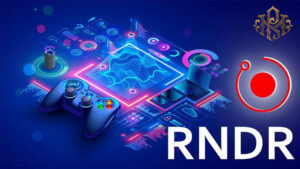
Close



In the ever-evolving cryptocurrency landscape, innovative projects continue to emerge, each with their own unique vision and technology. Among these projects is RNDR, a decentralized network for rendering and streaming graphic-intensive content. At the heart of the RNDR ecosystem is its native digital currency, the Render Token (RNDR). This article aims to provide a comprehensive exploration of the RNDR cryptocurrency, examining its origins, features, uses, and the broader project it is a part of.
The RNDR project was designed with the vision of democratizing access to high-performance computing resources for content creators around the world. Founded by a team of industry veterans and blockchain enthusiasts, RNDR aims to use blockchain technology to create a decentralized network for delivering and streaming graphic-intensive content, such as computer-generated imagery (CGI), visual effects ( VFX) and virtual reality. (VR) experiences. Using the power of distributed computing and blockchain drivers, RNDR seeks to deliver faster, more affordable and more scalable solutions for content creators of all sizes.

The RNDR project consists of several main components that collectively enable its functionality:
Decentralized Network: At its core, RNDR is a decentralized network of render nodes distributed around the world. These nodes contribute computing resources such as CPU and GPU power to process rendering tasks submitted by users.
Blockchain integration: RNDR uses blockchain technology to facilitate trustless transactions and incentivize network participants. RNDR ensures fair and transparent compensation for providing services through smart contracts and token economy.
Rendering software: RNDR offers tools and software plugins that allow content creators to seamlessly integrate with the network and submit rendering tasks. These tools support a wide range of industry standard rendering engines such as OctaneRender, Blender and Autodesk Maya.
Streaming Platform: In addition to rendering, RNDR provides a streaming platform for distributing graphic-intensive content to end users. Using decentralized streaming protocols, RNDR enables real-time delivery of high-quality video and interactive experiences over the Internet.
RNDR digital currency, also known as Render Token (RNDR), serves as the native utility token of the RNDR ecosystem. The token was initially distributed through a token sale event, during which participants could acquire tokens in exchange for cryptocurrency or fiat currency. Subsequently, RNDR tokens can be traded on various cryptocurrency exchanges, allowing users to freely buy, sell and transfer them.
RNDR tokens play an important role in the RNDR ecosystem and provide a wide range of tools and functionality:
Payment for rendering services: Content creators can use RNDR tokens to pay for rendering services on the RNDR network. By placing tokens as collateral, users can submit rendering tasks and compensate nodes for their computing resources.
Incentives for network contributors: Rendering nodes receive RNDR tokens as a reward for contributing computational resources to the network. These tokens serve as an incentive for nodes to maintain high-performance hardware, reliable Internet connectivity, and efficient rendering algorithms.
Governance and protocol enhancements: RNDR tokens also entitle holders to participate in the governance of the RNDR ecosystem. Through on-chain voting mechanisms, token holders can propose and vote on protocol upgrades, parameter changes, and other governance decisions.
RNDR tokens are designed to be interoperable with other blockchain networks and protocols, enabling seamless integration with external platforms and assets. This interoperability allows RNDR tokens to be used in conjunction with other cryptocurrencies, decentralized exchanges (DEX) and decentralized financial protocols, further expanding their utility and liquidity.

While the RNDR project offers promising solutions for rendering and streaming graphic-intensive content, achieving widespread adoption remains a challenge. As with any emerging technology, overcoming network effects, attracting users and building a strong ecosystem are important factors that will determine the long-term success of RNDR. Continued efforts to improve scalability, usability, and interoperability will be necessary to advance adoption and realize the full potential of the RNDR ecosystem.
Ensuring the quality and security of the rendered content is critical to the success of the RNDR project. As the demand for high quality graphic content continues to grow, it is essential to maintain strict quality control measures and strong security protocols to protect against potential vulnerabilities such as piracy, copyright infringement and malicious attacks. By implementing encryption, digital rights management (DRM), and content verification mechanisms, RNDR can provide content creators and consumers with peace of mind and assurance of platform integrity.
As a result, the RNDR cryptocurrency represents a fundamental component of the RNDR project, which enables decentralized rendering and streaming solutions for content creators around the world. With its innovative approach to distributed computing and blockchain incentives, RNDR aims to revolutionize the way graphic-intensive content is produced, distributed and consumed. As the adoption of VR, AR and other immersive technologies continues to expand, RNDR tokens play a pivotal role in powering the next generation of visual experiences, driving innovation and empowering creators and consumers.